Home energy management has become a hot topic over recent years, and in the quest for a more sustainable and energy efficient future, the ways in which we generate, consume and conserve energy in the day to day has gradually evolved.
The adoption of renewable energy sources like solar panels has surged, driven by a collective awareness of environmental concerns and the pursuit of energy independence. And, with smart home systems and automation technologies also on the rise, we’re now able to make increasingly data-driven decisions to optimise our usage of energy to ensure that it supports our lifestyles as well as minimising our environmental impact.
Here, we take a look at the latest ways that home energy management is providing greater efficiency and reliability, and allowing a more sustainable approach to be taken to daily life.

Battery storage
Traditionally, home energy management relied heavily on the grid, with little scope for individual control or optimisation. However, advancements in technology, and particularly the emergence of battery storage for home systems, have empowered homeowners to take charge of their energy usage like never before. Solar panels, once considered a luxury reserved for the environmentally conscious elite, have become increasingly affordable and accessible, paving the way for widespread adoption, but whilst being instrumental in generating clean energy, they are also inherently limited by factors such as weather conditions and time of day. Battery storage systems address this limitation by capturing surplus energy generated during peak sunlight hours and storing it for later use, so that homeowners can harness solar power even after the sun sets or during cloudy days. In essence, this also means they can reduce their reliance on the grid, as well as lowering electricity bills.
Energy monitoring and smart home automation
Smart home monitoring and automation technologies have become central to home energy management over recent years, and have made it possible to keep track of usage in order to make small tweaks for the better – although many systems also handle that bit for you.
Smart meters, sensors, and energy monitoring devices installed throughout the home have made it possible to gain real-time insights into your energy usage patterns, allowing you to identify opportunities for both conservation and optimisation. Along with smart home automation systems, which support remote controlling and scheduling of your heating and cooling systems plus other household appliances, it’s now easier than ever to maximise efficiency and minimise waste without compromising on convenience or comfort.

Energy-efficient appliances and building design
But home appliances, too, have undergone something of a transformation, and in line with changing regulatory and government standards, have become more energy efficient over time. Not only that, but we’ve also seen building design practices evolve in accordance with these, so that homeowners now have a wealth of options when it comes to minimising their environmental impact through the reduction of energy consumption.
One of the simplest ways to significantly reduce your energy bills and reduce greenhouse gas emissions is to invest in energy-efficient appliances, lighting, insulation, and windows – and those purchasing new build properties will find that many of these are already incorporated. If you’re living in an older home, then there are still some relatively simple tweaks you can make to your set-up, too, although some will require more extensive renovations.
Demand response and time-of-use pricing
The adoption of demand response programmes and time-of-use pricing structures has surged over recent years, and has also played a key role in improving home energy management. Spearheaded by utility companies, these concepts aim to incentivise homeowners to shift their energy usage to off-peak hours, when electricity demand is lower, and while not everyone is able to take advantage of this due to their daily schedules, for those who can, it has been something of a game changer.
By helping to reduce strain on the grid, those who take advantage of these offers can avoid costly peak demand charges and move towards more efficient use of resources. Again,smart home technology comes into play here, with smart meters and dynamic pricing mechanisms providing homeowners with the information they need to adjust their energy consumption patterns and take advantage of lower rates during periods of low demand.

Future outlook
As it stands, the ongoing evolution of home energy management holds great promise when it comes to shaping a more sustainable, resilient, and equitable energy future – and it’s never been easier to make your home more efficient or reduce your carbon footprint. By taking a holistic approach that integrates technological innovation and behaviour change, meaningful progress can be made towards creating a cleaner, greener and all-round brighter world for generations to come, and with no time like the present, there are some surprisingly simple ways you can get the ball rolling on optimising your home energy management in 2024.






















